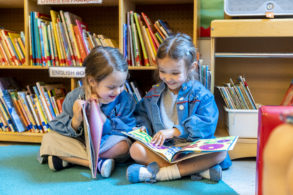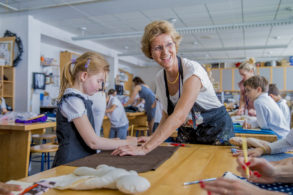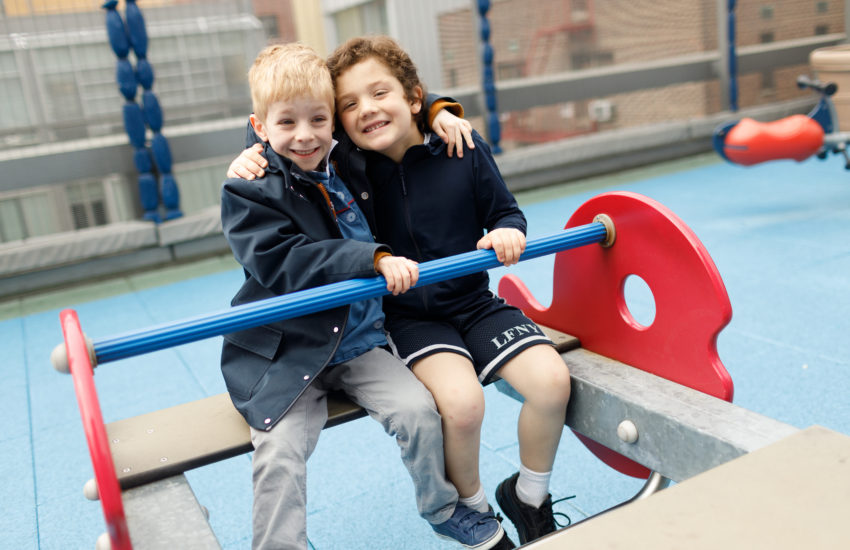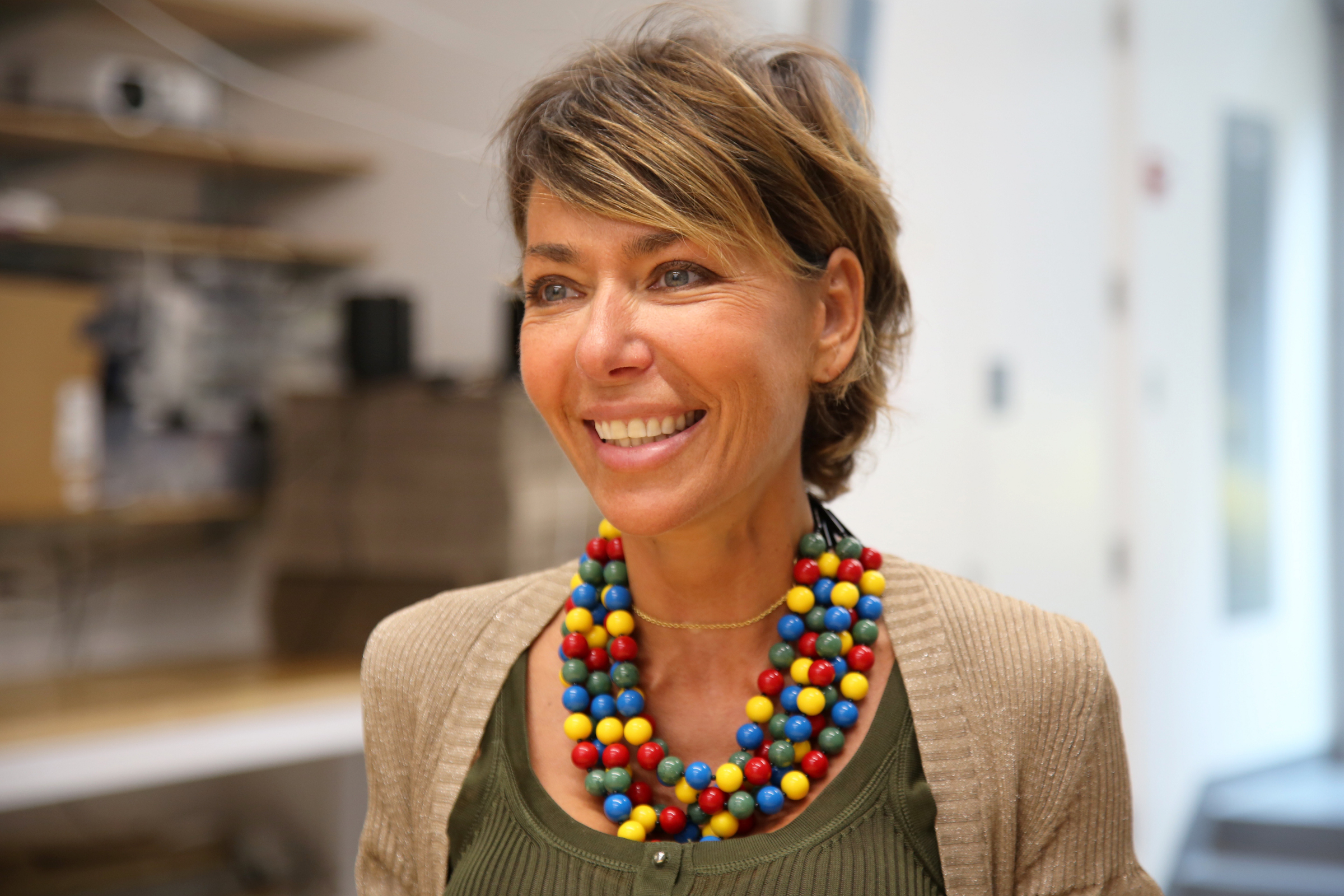Vannina lives and breathes multiculturalism. Her name reflects her origins: an Algerian grandfather (Kabyle), a Turkish great-grandmother and Corsican roots. Growing up in Corsica, where bilingualism is integrated into the local culture, Vannina was fascinated by foreign languages. She chose to pursue studies in English and Spanish at the University of Corsica, followed by the University of Philology and Letters of Cordoba in Spain.
From a young age Vannina’s passion to work with children led her to a fulfilling career as a teacher and principal. In 2005, she moved to the United States. She taught first at the International School of Louisiana, a bilingual English-Spanish charter school. In 2007, she became the director of the Primary School at the Lycée Français de New York. Her goal is to tap innovative pedagogy to promote a holistic approach to teaching students in a bilingual setting.

Why do you think that parents are becoming more and more interested in bilingual education?
In the past, bilingualism was the source of many prejudices: it was suspected to provoke mental confusion, to be the origin of academic failure, to hamper with children’s language development. Indeed, speaking more than one language was not always considered an advantage.
These days this thinking has changed markedly. It’s interesting to note that in monolingual families, many parents wish they could provide their children with a bilingual and bicultural education, even if they themselves did not experience this growing up.
Being able to speak more than one language often translates into a rich and varied social, cultural and educational development.
The advancement and proliferation of fields such as sociolinguistics, psycho-linguistics and neurobiology have reduced to almost zero the prejudices once tied to bilingualism, and instead have underscored its educational, cultural, social, economic and even political advantages. Among these is the most obvious advantage, which is being able to speak more than one language and the doors it opens.
During childhood, this often gets translated into a rich and varied social, cultural and educational development that leads to increased opportunities at forging connections and friendships with individuals speaking one of the two languages. In terms of the intellectual development of the child, research has shown that being able to associate an object or an idea with numerous words enables bilinguals to form more flexible and creative thoughts because they aren’t restricted to only one signifier. Moreover, because since childhood, they’ve been accustomed to changing language depending on their interlocutor, bilinguals have a more sensitive and nuanced approach to communication.

At a time when communication technologies have enabled us to surpass notions of space and time, the proficiency of numerous languages allows us to communicate and develop relationships with a considerable number of people from different cultural backgrounds. More than that, in an increasingly globalized world, in which commercial barriers are being erased, international relations are broadening, partnerships between countries are developing, there is undeniably an economic and political advantage to speaking numerous languages and understanding various cultures.
What factors contribute most to the development of language in bilingual and multilingual children?
Most people who speak only one language think they are in the norm, but this is, in fact, an erroneous belief. Around the world, bilinguals or polyglots are in the majority.
My experience is that all children have the potential to learn to speak more than one language. That being said, language aptitude development differs considerably from one child to the next, whether or not that child is bilingual. The fact that a second language is being learned as the child is learning other subjects is not a disadvantage. Certain monolingual children quickly develop language competency, while others take more time.
The same is true for children who are learning multiple languages. In fact, we should put into perspective the numerous factors that play a role in children gaining language proficiency: their personality, intellectual aptitude, social development, the quality and quantity of the interactions with their parents, their peers, families, and the people that surround them, the variety of language interactions and the level of engagement and stimulation created by their environment in their target languages.
Bilinguals display more flexibility and creativity in the manipulation of concepts.
A stimulating academic environment where a language is learned in situations of authentic and engaging communication centered on the needs of the child, combined with a positive attitude from the parents vis a vis their child’s bilingualism are essential.
What are the cognitive benefits of bilingualism?
Many! Bilingualism, by enabling us to associate numerous words to single objects and ideas, stretches the relationship between the signifier and the significant, which in turn enables a child to work with concepts with more flexibility and creativity.
Here’s a simple example. If we ask a bilingual Franco-American child what can be created with a baguette, undoubtedly she will start thinking of all the possible associations with “baguette” in French and “stick” (its translation) in English (baguette magique (magic wand), baguette de pain (loaf of bread), règlisse (stick of licorice), bâton (a conductor’s baton)…and then also stick, glue stick, lipstick, stickers… ). You may well see a more original or surprising answer than one you might have from a monolingual child.
Researchers have also pointed out that bilingual children attach more importance to the meanings of words than to their acoustic images, which facilitates reading and reading comprehension. Ultimately, bilingual children are accustomed from a young age to adapt what language they speak depending on the interlocutor, which enables them to develop a greater sensibility and understanding of the other. As a consequence, they are more at ease during social and verbal exchanges.

How do you observe that your own perspective on the world has developed as a result of being bilingual?
I did not become bilingual until later in life: the proximity between Corsica and Italy was such that I was able to make friends with Italians and that pushed me to become proficient in their language (I also learned English and Spanish in high school). I then pursued foreign languages (Spanish and English) and spent several months in Cordoba during the academic year.
The bilingual situation does not represent the sum of two monolingualism, it is a unique linguistic situation.
During my childhood, the Corsican language always had a presence in my life, but it was more of a passive bilingualism. My Algerian grandfather spoke neither Arabic nor Turkish with his children, so my father was raised in the French language, and so was my mother. However, my experience with this is that a language spreads a system of values, of attitudes, of behavior, of ways of expressing oneself, of traditions, proverbs, songs, lullabies that show us the world in a certain way.
If we add literature, history, rituals associated with each language, it is evident that in using a language we enter a unique universe, a particular way of seeing and interpreting the world. French is my mother tongue, and thus the language in which I express myself the best. However, having grown up in Corsica, there are certain words or expressions in the Corsican language that can really express how I feel. They are intimately associated to exchanges, sentiments or emotions from my childhood and their French translation can be but imperfect or incomplete.
The bilingual situation does not represent the sum of two monolingualism, this is a unique linguistic situation created by the combination of two different languages that enrich the bilingual’s language proficiency. In the same way that biculturalism is not the sum of two juxtaposed cultures but a unique and deeper way of perceiving and interpreting the world.
About the Author :
Vannina Boussouf grew up on the Mediterranean island of Corsica, where bilingualism is an integral part of identity. She studied English and Spanish at the University of Corsica, and philology and letters in Cordoba, Spain, before starting a career as an elementary teacher and administrator. Vannina relocated to the United States in 2004, where she taught at the International School in Louisiana. She joined the Lycée in 2007 to direct the Primary School, and during her tenure, she has focused on innovative teaching methods that support the development of the whole child in a bilingual setting.


